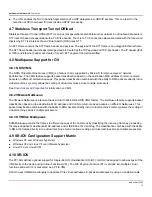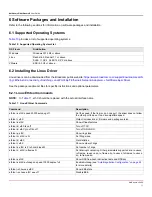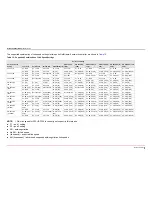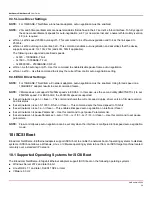
NetXtreme-UG100
23
NetXtreme-C/NetXtreme-E
User Guide
9 System-Level Configuration
The following sections provide information on system-level NIC configuration.
9.1 UEFI HII Menu
Broadcom NetXtreme-E series controllers can be configured for pre-boot, iSCSI and advanced configuration such as SR-
IOV using HII (Human Interface) menu.
To configure the settings, during system boot, enter BIOS setup and navigate to the network interface control menus.
9.1.1 Main Configuration Page
This page displays the current network link status, PCIe Bus:Device:Function, MAC address of the adapter and the Ethernet
device.
The 10GBASE-T card allows the user to enable or disable Energy Efficient Ethernet (EEE).
9.1.2 Firmware Image Properties
Main configuration page – The firmware Image properties displays the Family version, which consists of version numbers of
the controller BIOS, Multi Boot Agent (MBA), UEFI, iSCSI, and Comprehensive Configuration Management (CCM) version
numbers.
9.1.3 Device-Level Configuration
Main configuration page – The device level configuration allows the user to enable SR-IOV mode, number of virtual functions
per physical function, MSI-X vectors per Virtual function, and the Max number of physical function MSI-X vectors.
9.1.4 NIC Configuration
NIC configuration – Legacy boot protocol is used to select and configure PXE, iSCSI, or disable legacy boot mode. The boot
strap type can be Auto, int18h (interrupt 18h), int19h (interrupt 19h), or BBS.
MBA and iSCSI can also be configured using CCM. Legacy BIOS mode uses CCM for configuration. The hide setup prompt
can be used for disabling or enabling the banner display.
VLAN for PXE can be enabled or disabled and the VLAN ID can be configured by the user. See the
Auto-Negotiation
Configuration
for details on link speed setting options.
9.1.5 iSCSI Configuration
iSCSI boot configuration can be set through the Main configuration page -> iSCSI configuration. Parameters such as IPv4
or IPv6, iSCSI initiator, or the iSCSI target are set through this page.
Refer to iSCSI
Boot
for detailed configuration information.















































